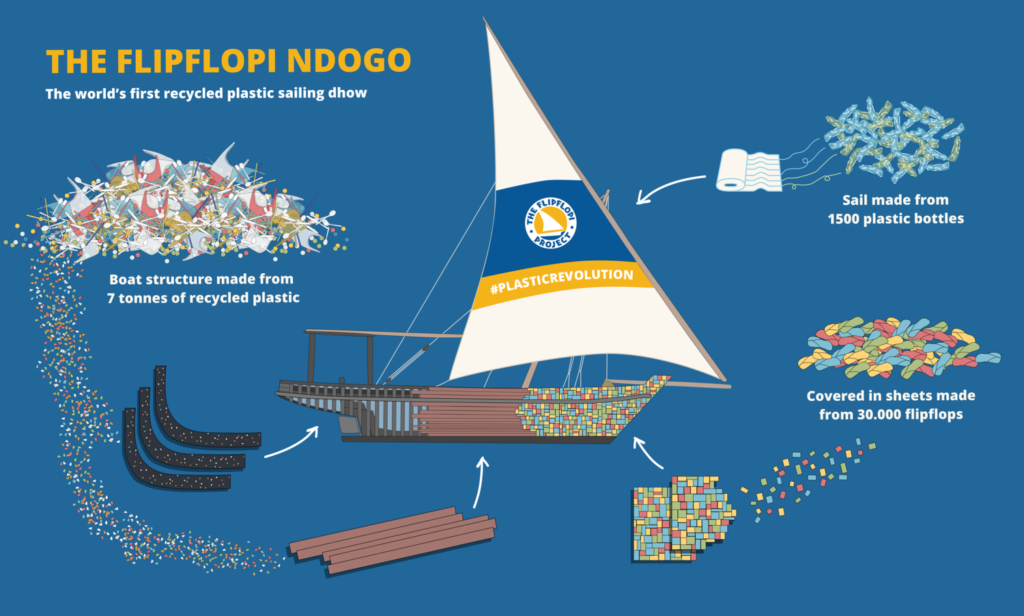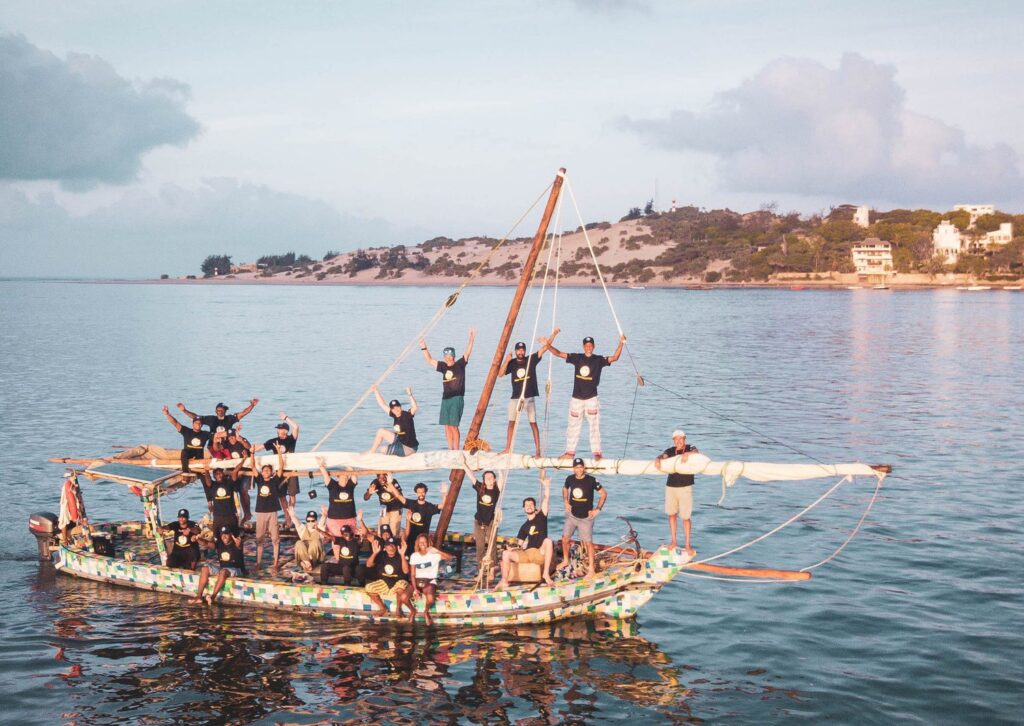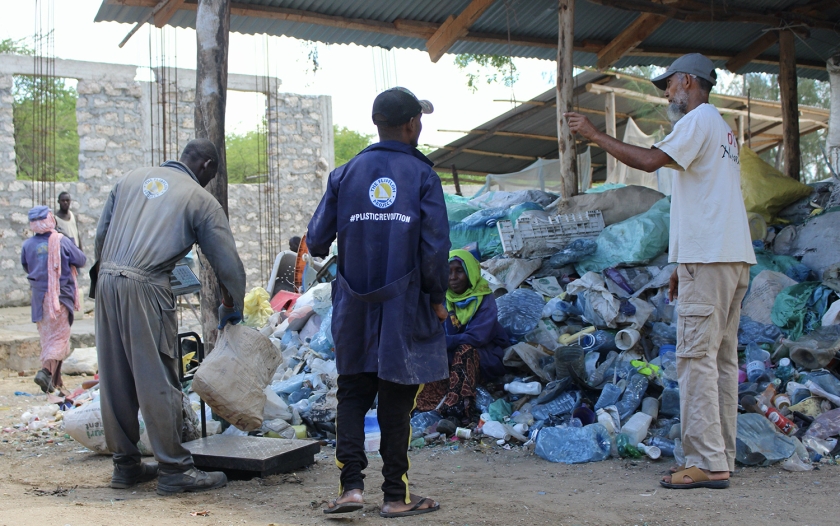The taxi boat shoots past Lamu Town, a UNESCO World Heritage site famous for being the oldest and best preserved Swahili settlement dating back to 1370.
It is a hot and sunny afternoon, and the 20-minute ride on clear turquoise water that shimmers under the blazing sun comes to a stop and docks on the beach next to a nondescript boatyard.
At last, the Flipflopi dhow boat that made global headlines in 2019 comes into full view.
The dhow sits perched upon a structure by the entrance of the boatyard. Its current state is a far cry from the glory days of its maiden voyage from Lamu, Kenya to Zanzibar, Tanzania. It is undergoing a kind of postmortem to asses engineering flaws, what worked well and how the next one can be improved upon.
Nine-metres in length, the dhow boat was made with 10 tonnes of plastic waste collected from the beaches of various towns and villages on the coast of Kenya and its exterior is adorned with a colourful patchwork of some 30,000 flip-flops giving it its famous vibrant, quilt-like façade.

“We saw that all our beaches were overwhelmed by plastic, and we thought: what can we do about this?” said Ali Skanda, a renowned boat builder and the co-founder of The FlipFlopi Project. “We decided to build a moving object that people in faraway places can see and be inspired by to do something about the plastic pollution in our environment.”
Three years in the making, the FlipFlopi was a spectacular success not only as a piece of innovative engineering but more importantly as an environmental campaign. For two years, the boat docked at ports in numerous cities and towns across Kenya, Tanzania and even Lake Victoria and attracted thousands of spectators including lawmakers and students.
“The FlipFlopi is a highly visible, shocking reminder that plastic is everywhere, and we’re getting too used to see it in the oceans where it clearly does not belong,” said Llorenç Milà i Canals, head of the United Nations Environment Programme (UNEP) Life Cycle Initiative.
“Bringing the colourful mix and match bits of recycled plastic into a boat that then sails across the ecosystems it wants to protect is a great way to shed light on our unsustainable penchant for producing cheap plastic products, using them, and then throwing them away,” he added.
Once regarded as the miracle material, affordable, flexible and durable with a seemingly endless array of uses in many industries, plastic has become a blight on the planet and human health.
Simply put, the world is drowning in plastic pollution and there is no end in sight. More than 430 million metric tonnes of plastics are produced each year globally, of which over two-thirds are short-lived products which soon become waste. It is expected that by the year 2060, this figure will triple if no action is taken.
Most of the plastic waste is burned, dumped or released into the environment where it breaks down and seeps into the food we eat, the water we drink and ultimately, into our bodies.
The situation is just as bad in the ocean. 11 million tonnes of plastic waste is dumped into the ocean each year—an equivalent of one garbage truck every minute.
However, there is a growing awareness of the dangers of plastics thanks in part to events such as World Environment Day, marked on 5 June every year.
It is a reminder of the extent of the problem and the power of individuals to take action against plastic pollution, not only with the choices they make as consumers but to call on companies and governments to take comprehensive action through legislation against single-use plastic products.
The Flipflopi Project
The Flipflopi expedition is another example of Kenya’s broader leadership in addressing plastic pollution. Last year Kenya hosted the UN Environment Assembly in its capital Nairobi, where Heads of State, ministers of environment and other representatives from UN Member States, adopted a resolution to end plastic pollution that would pave the way for an international legally binding agreement by 2024.
The FlipFlopi Project plans to build on the success of the first dhow by building an even bigger boat that could sail to Cape Town, South Africa and beyond. In the meantime, its 19 full-time staff are working to ensure that the original inspiration for combatting plastic pollution is not lost.

The organization now runs a course to teach young, often unemployed people from Lamu about plastic pollution and recycling combined with boat-building skills that the island is famous for.
New products include small taxi dhows made with 100 per cent in-house designed and manufactured moulds and locally collected and recycled plastic. The boat is already being tested for potential commercial use.
About World Environment Day
World Environment Day on 5 June is the biggest international day for the environment. Led by UNEP and held annually since 1973, the event has grown to be the largest global platform for environmental outreach, with millions of people from across the world engaging to protect the planet.
This post was originally published by UNEP.


